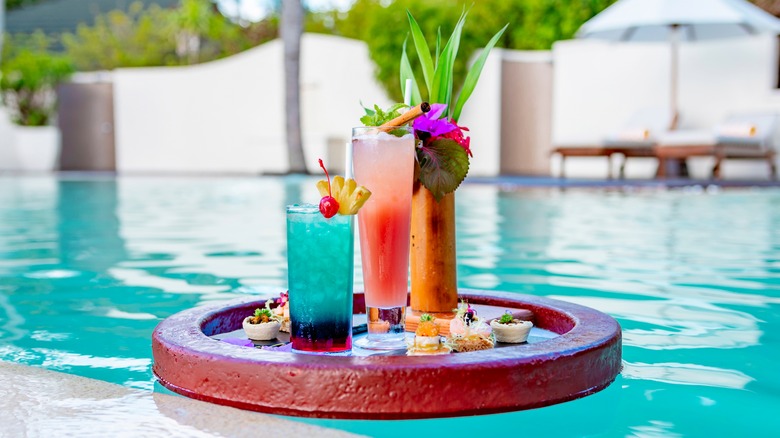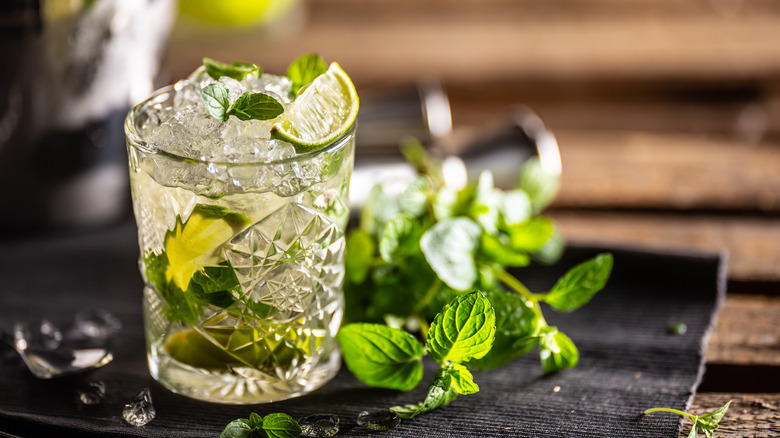The Difference To Note When Ordering A Tropical Vs. Tiki Drink
In the world of cocktails, where experimenting bartenders are constantly producing new favorites and reimagining old mixtures, distinctions between drink categories like tropical and tiki can fall by the wayside. However, the differences are real and meaningful, involving both ingredients and mixing styles, both of which are imbued with the history of the drinks. Both conjure images of sandy beaches and palm trees and feature bright, refreshing flavors, but tropical drinks stand apart from tiki ones by being lighter, simpler, and using more fresh ingredients. Tiki drinks tend to be heavier, more potent and involve long lists of ingredients, including spices and multiple liquors.
The differences between the two won't always be obvious, as tiki is essentially a subcategory of tropical, but they become more clear when you consider individual drinks. A classic tropical drink would be something like a mojito, which is light and very straightforward — made with fresh lime, mint, and sugar, all genuine tropical ingredients local to Cuba, it's birthplace. The mai tai, which is arguably the most recognizable tiki drink, is made using orgeat (an almond syrup originating in France) as well as tropical ingredients like lime and orange curaçao. But it's a thicker, more complex drink that came out of the California restaurant scene in the early 20th century. Born of a Western fascination with Polynesian culture, "tiki" is an attempt to evoke the tropics without actually being from there.
Tropical cocktails are fresh and local, while tiki is complex
Tropical drinks evolved naturally from locally available ingredients and even served a purpose beyond inebriation. The ancestors of the mojito can be traced all the way back to the 16th century, when lime, sugar, mint, and local spirits were mixed in Caribbean countries both for refreshment and medicinal value. That same practical mix is also behind the origins of tropical drinks like Jamaica's planter's punch and the Caribbean navy grog used by the British to hydrate sailors and ward off scurvy. A different lineup of local ingredients — coconut, pineapple, and rum — can be found on the island of Puerto Rico, and make up the classic tropical mixer, the piña colada.
The more complex mix of ingredients in tiki drinks stems from its origins as an American invention. Pioneers like Donn Beach and Vic Bergeron conjured up an imaginary world of Caribbean drinks, Asian food, and fake Polynesian decorations and created cocktails with up to a dozen ingredients to impress guests. Think of the zombie, invented by Beach, which involves three different liquors, multiple juices (usually lime and grapefruit), the spice syrup falernum, grenadine, bitters, and French Pernod. Things won't always be that clear cut, of course, but if it's something a local would drink on a hot day, it's probably tropical, and if it's a creative, complex, syrupy mixture you might get at a resort, it's probably tiki.

